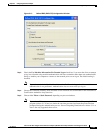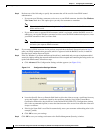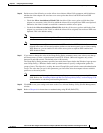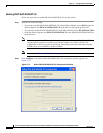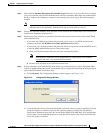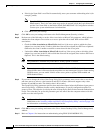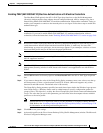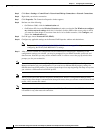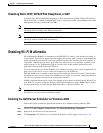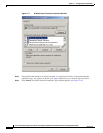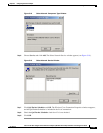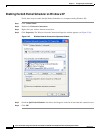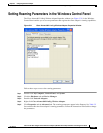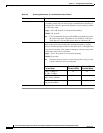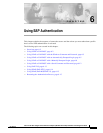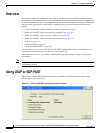
5-51
Cisco Aironet 802.11a/b/g Wireless LAN Client Adapters (CB21AG and PI21AG) Installation and Configuration Guide
OL-4211-03
Chapter 5 Configuring the Client Adapter
Enabling Wi-Fi Multimedia
Disabling Static WEP, WPA/WPA2 Passphrase, or EAP
To disable static WEP, WPA/WPA2 passphrase, or EAP authentication [LEAP, EAP-FAST, EAP-TLS,
PEAP (EAP-GTC), or PEAP (EAP-MSCHAP V2)] for a particular profile, choose None on the Profile
Management (Security) window and click OK.
Note Choosing any security option other than Pre-Shared Key (Static WEP) on the Profile Management
(Security) window disables static WEP automatically.
Note Choosing Pre-Shared Key (Static WEP) or WPA/WPA2 Passphrase on the Profile Management
(Security) window disables EAP automatically.
Enabling Wi-Fi Multimedia
Wi-Fi Multimedia (WMM) is a component of the IEEE 802.11e wireless LAN standard for quality of
service (QoS). It specifically supports priority tagging and queuing. QoS is an access point feature that
enables networking professionals to provide preferential treatment to certain traffic at the expense of
other traffic. Without QoS, the access point offers best-effort service to each packet, regardless of the
packet contents or size. Implementing QoS in a wireless LAN makes network performance more
predictable and bandwidth usage more effective.
Cisco recommends that you enable WMM if your computer is running a time-sensitive application for
QoS-aware clients such as voice or video (for example, Cisco IP SoftPhone).
QoS and WMM must be enabled on the access point to which the client will associate. These features
are supported on the access point in Cisco IOS Release 12.3(2)JA or later. Refer to the documentation
for your access point for instructions on enabling these features.
WMM is supported automatically on the client adapter in the software included in Install Wizard 2.0 or
later. However, you must enable the Windows QoS Packet Scheduler to ensure WMM support. Follow
the instructions below to enable the QoS Packet Scheduler on Windows 2000 or XP.
Note The QoS Packet Scheduler must be installed before you can enable it. It comes preinstalled on Windows
XP; however, you must install it on Windows 2000.
Enabling the QoS Packet Scheduler on Windows 2000
Follow these steps to enable the QoS Packet Scheduler on a computer running Windows 2000.
Step 1 Double-click My Computer, Control Panel, and Network and Dial-up Connections.
Step 2 Right-click your wireless network connection.
Step 3 Click Properties. The Wireless Cisco Connection Properties window appears (see Figure 5-17).



